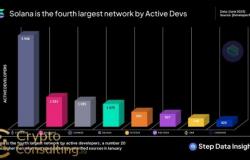
The cryptocurrency market has undergone a significant transformation in 2025, with trading volumes surging past $4 trillion annually and volatility metrics showing fundamental changes in market structure. This evolution reflects the maturation of digital asset markets from retail-dominated speculation to sophisticated financial ecosystems with substantial institutional participation. Understanding these market dynamics is essential for investors, traders, and financial professionals navigating the increasingly complex cryptocurrency landscape. This comprehensive analysis examines trading volumes, volatility patterns, institutional participation, market microstructure, and emerging trends that are reshaping how cryptocurrencies are priced, traded, and analyzed.
The $4 trillion annual trading volume milestone represents more than quantitative growth—it signals qualitative changes in market participants, trading infrastructure, and price discovery mechanisms. Institutional investors now account for approximately 38% of total trading volume, compared to less than 15% in 2022. This institutional presence has introduced professional market-making, sophisticated derivatives trading, and risk management practices that have fundamentally altered market behavior. The result is a market that increasingly resembles traditional financial markets in structure while retaining unique characteristics that distinguish cryptocurrency from conventional assets.
Trading Volume Growth and Market Depth

Cryptocurrency trading volumes have experienced consistent growth throughout 2025, with daily averages exceeding $110 billion across all markets. Bitcoin alone accounts for approximately $48 billion in daily volume, while Ethereum contributes $32 billion. The remaining volume is distributed across thousands of altcoins, stablecoins, and derivative products. This volume growth has occurred despite multiple market corrections, indicating that trading activity is driven by structural factors rather than purely speculative fervor.
Spot market volumes have grown substantially, but derivatives markets have expanded even more rapidly. Perpetual futures contracts now represent over 55% of total cryptocurrency trading volume, with Bitcoin and Ethereum futures dominating. Options markets have also matured, with open interest in Bitcoin options exceeding $28 billion. The growth of derivatives markets indicates increasing sophistication among market participants who use these instruments for hedging, speculation, and portfolio management.
Market depth has improved considerably across major cryptocurrency pairs. On leading exchanges like Coinbase, Binance, and Kraken, bid-ask spreads for Bitcoin/USD pairs have narrowed to approximately 2-4 basis points for market orders below $1 million. This tight spread environment reduces transaction costs and enables efficient execution for large institutional orders. Order book depth at key price levels has similarly improved, with cumulative liquidity within 1% of mid-market prices often exceeding $500 million for major pairs.
The geographic distribution of trading volume has shifted notably. North American and European exchanges have gained market share relative to Asian platforms, reflecting regulatory developments and institutional adoption patterns. U.S.-regulated exchanges have implemented comprehensive surveillance systems, clearing mechanisms, and custody solutions that appeal to institutional participants. Coinbase alone processes over $15 billion in daily volume, making it one of the world's largest cryptocurrency trading venues.
24/7 market operations distinguish cryptocurrency from traditional asset classes and create unique volatility patterns. Unlike stock markets with defined trading hours and overnight gaps, cryptocurrency markets operate continuously. This continuous trading enables real-time price discovery and eliminates the overnight risk and gap opens that characterize equity markets. However, it also means that significant price movements can occur when many participants are inactive, potentially amplifying volatility during low-liquidity periods.
Volatility Patterns and Market Maturation
Volatility remains an inherent characteristic of cryptocurrency markets, but metrics show notable moderation compared to earlier periods. Bitcoin's 30-day realized volatility averaged 42% in 2025, down from peaks exceeding 80% during the 2021-2022 cycle. This decline reflects larger market capitalization, improved liquidity, and diversified participant base. However, cryptocurrency volatility still significantly exceeds traditional asset classes—the S&P 500's comparable volatility averages approximately 15%.
Volatility patterns have become more predictable and less prone to extreme spikes. Historical analysis shows that cryptocurrency volatility tends to cluster, with high-volatility periods following market-moving news or regulatory developments. The introduction of institutional risk management practices, including systematic stop-loss orders and volatility-based position sizing, has created dampening effects on extreme price movements. When sharp declines begin, institutional selling pressure triggers quickly but tends to be better calibrated to absorb sell-side liquidity without causing cascading liquidations.
Implied volatility from options markets provides insights into market expectations. Bitcoin implied volatility has stabilized around 55-65% for at-the-money options, suggesting that market participants anticipate continued substantial price fluctuations but within ranges that are less extreme than historical norms. The volatility term structure—the relationship between short-term and long-term implied volatility—typically shows contango, indicating expectations that near-term volatility will moderate over time.
Volatility asymmetry, where downside volatility exceeds upside volatility, persists in cryptocurrency markets. This pattern, similar to equity markets, reflects that fearful selling during declines tends to be more violent than enthusiastic buying during rallies. The volatility skew in options markets demonstrates this asymmetry, with out-of-the-money puts trading at higher implied volatilities than out-of-the-money calls. This skew creates opportunities for sophisticated options traders while indicating market concerns about downside risk.
Intraday volatility patterns show distinctive characteristics. Trading activity and volatility typically peak during hours when American, European, and Asian markets overlap, creating maximum global participation. Weekend volatility has historically exceeded weekday volatility, likely because institutional participants reduce activity while retail trading continues. However, as institutional presence has grown, this weekend effect has moderated, suggesting more consistent participant composition throughout the week.
Institutional Participation and Market Impact
Institutional investors have become dominant forces in cryptocurrency markets, fundamentally altering trading dynamics and price discovery. Hedge funds, asset managers, proprietary trading firms, and corporate treasuries collectively manage over $320 billion in cryptocurrency assets. This institutional capital brings professional trading strategies, risk management disciplines, and long-term investment approaches that differ markedly from retail behavior.
Quantitative trading strategies have proliferated as institutional participants deploy sophisticated algorithms. Statistical arbitrage, market-making, momentum strategies, and mean-reversion approaches now account for substantial trading volume. These algorithmic traders provide liquidity and improve market efficiency by quickly exploiting price discrepancies across exchanges and between spot and derivatives markets. High-frequency trading firms have entered cryptocurrency markets, bringing microsecond-level speed advantages and advanced order flow analysis.
Market-making has become highly professional, with specialized firms like Jump Trading, Jane Street, and Cumberland providing continuous liquidity across multiple venues. These market makers earn bid-ask spreads while managing inventory risk through hedging strategies. Their presence has dramatically improved market quality, reducing transaction costs and enabling large orders to execute with minimal price impact. In return, exchanges often provide maker rebates and preferential fee structures that incentivize liquidity provision.
Institutional custody solutions have been essential for enabling institutional participation. Qualified custodians like Coinbase Custody, Fidelity Digital Assets, and Anchorage Digital provide regulated custody services with insurance, segregated storage, and institutional-grade security. These solutions address concerns about private key management and asset security that previously deterred institutional investment. The availability of trusted custody has been as important as any other factor in facilitating institutional adoption.
Derivatives usage by institutions differs markedly from retail patterns. Institutions primarily use derivatives for hedging portfolio exposure, earning yield through covered call strategies, and implementing relative value trades between spot and futures markets. In contrast, retail users more commonly employ high leverage for directional speculation. This difference means institutional derivatives usage tends to stabilize markets rather than amplify volatility, as hedging activity offsets directional exposure.
Institutional trading desks have established direct relationships with major exchanges, enabling OTC block trades that minimize market impact. When institutions need to execute large orders, they often arrange trades away from public order books through broker intermediaries. These OTC trades, while not reflected in public volume statistics, represent substantial transaction flow. The OTC market has matured considerably, with standardized settlement procedures, ISDA master agreements adapted for cryptocurrency, and trade reporting requirements.
Price Discovery and Market Efficiency
Price discovery in cryptocurrency markets has become increasingly efficient as market structure has improved. Cross-exchange arbitrage opportunities, once substantial and persistent, now close within seconds as algorithmic traders exploit any pricing discrepancies. This rapid arbitrage ensures that prices remain consistent across major trading venues, reducing the importance of exchange selection for execution quality.
The relationship between spot and futures prices has stabilized, with basis (the difference between futures and spot prices) generally reflecting interest rate differentials and funding costs. Perpetual futures funding rates, which equilibrate long and short interest, have moderated from the extreme levels seen during earlier bull and bear markets. Current funding rates typically range between -0.01% and +0.03% per eight-hour period, indicating relatively balanced positioning between bulls and bears.
Price discovery increasingly originates from institutional order flow rather than retail speculation. When major institutions adjust positions, their order flow often presages price movements that subsequently manifest over hours or days. Market microstructure analysis shows that large informed trades, characterized by aggressive execution and substantial size, have predictive power for near-term price movements. Conversely, small retail orders show little predictive ability, suggesting retail participants are more reactive than anticipatory.
Correlations between cryptocurrencies have remained elevated, with Bitcoin dominance affecting most altcoin price movements. The average correlation between Bitcoin and major altcoins exceeded 0.75 in 2025, indicating that systematic factors affect the entire cryptocurrency market. This high correlation suggests that cryptocurrency represents a distinct asset class with common risk factors rather than a collection of independent assets. For diversification purposes, holding multiple cryptocurrencies provides less benefit than holding assets across different asset classes.
Cryptocurrency correlations with traditional assets have evolved. Bitcoin's correlation with equity indices has increased to approximately 0.45, up from near-zero correlations in earlier years. This rising correlation reflects cryptocurrency's integration into broader financial markets and suggests that common macroeconomic factors—particularly monetary policy and risk appetite—affect both asset classes. The "digital gold" narrative has weakened as Bitcoin has behaved more like a risk asset than an inflation hedge during recent periods.
Macroeconomic Factors and Market Sensitivity
Cryptocurrency markets have become increasingly sensitive to macroeconomic developments, particularly monetary policy decisions by major central banks. Federal Reserve interest rate decisions and policy statements consistently trigger significant cryptocurrency price movements. When the Fed signals accommodative policy, cryptocurrency prices generally rally; hawkish signals produce the opposite effect. This sensitivity indicates that cryptocurrency has integrated into the broader financial ecosystem and responds to the same liquidity and risk appetite factors that affect stocks and bonds.
Inflation data releases similarly impact cryptocurrency markets. Higher-than-expected inflation initially supported Bitcoin prices during 2021-2022 as investors sought inflation hedges. However, this relationship weakened as inflation fears subsided and focus shifted to real interest rates and monetary policy responses. Current market dynamics suggest cryptocurrency is more sensitive to interest rate expectations than to inflation directly.
Dollar strength inversely correlates with cryptocurrency prices. When the U.S. Dollar Index strengthens, cryptocurrencies typically weaken, and vice versa. This negative correlation suggests that cryptocurrencies function partially as alternatives to dollar-denominated assets. Investors seeking to reduce dollar exposure may allocate to cryptocurrency, while dollar strength indicates tightening financial conditions that reduce risk appetite across speculative assets.
Geopolitical events create localized cryptocurrency demand spikes in affected regions. Currency crises, banking system instability, and capital controls drive adoption and price premiums in specific countries. However, these localized effects have diminishing impact on global cryptocurrency prices as markets have grown larger and more liquid. A crisis in a single country represents a smaller proportion of global demand than was previously the case.
Regulatory Developments and Market Impact
Regulatory clarity in major jurisdictions has reduced one source of volatility while creating new market dynamics. The implementation of comprehensive cryptocurrency regulations in the United States and European Union has eliminated uncertainty that previously triggered dramatic price swings around regulatory announcements. Markets now operate within understood frameworks, enabling participants to make long-term plans without fear of existential regulatory threats.
Exchange compliance requirements have standardized market structure. Major exchanges now implement KYC/AML procedures, market surveillance systems, and reporting requirements comparable to traditional financial exchanges. This compliance infrastructure has reduced fraud and manipulation while increasing operational costs that are reflected in fee structures. The regulatory barriers to entry have consolidated the exchange industry, with large compliant platforms gaining market share from smaller unregulated competitors.
Securities law application to cryptocurrency has clarified which assets are subject to registration requirements. This clarity has reduced legal risk for market participants while eliminating some tokens from major exchanges. The delisting of securities tokens from major platforms reduced available trading pairs but improved compliance posture for exchanges and investors. The market has adapted by concentrating liquidity in tokens with clear regulatory status.
Taxation requirements have affected trading behavior, particularly reducing high-frequency retail trading where each transaction creates tax reporting obligations. Sophisticated investors use tax-advantaged structures like qualified retirement accounts and harvest tax losses strategically. These tax-optimization behaviors create predictable year-end selling pressure as investors crystallize losses for tax purposes.
Market Manipulation and Surveillance
Market manipulation concerns have declined as surveillance systems have improved and enforcement has increased. Pump-and-dump schemes, wash trading, and spoofing still occur, particularly on smaller exchanges and for low-liquidity tokens, but major exchanges have implemented sophisticated detection systems. Unusual order patterns, coordinated wash trades, and spoofing attempts are flagged and investigated, with violators facing account suspensions and regulatory referrals.
Surveillance technology adapted from traditional markets has been deployed across cryptocurrency exchanges. These systems monitor order flow, identify unusual trading patterns, and detect potential manipulation in real-time. The integration of cross-market surveillance enables detection of manipulation schemes that span multiple exchanges. This improved surveillance has made manipulation more difficult and risky, particularly for institutional participants who face substantial reputational and regulatory consequences if caught.
Social media manipulation, including coordinated pump attempts organized through Telegram and Discord, continues to affect small-cap tokens. However, these schemes have limited impact on major cryptocurrencies where market capitalization and liquidity make coordinated manipulation impractical. Regulators have prosecuted several high-profile pump-and-dump schemes, creating deterrent effects that have reduced the prevalence of these schemes.
Market Structure Evolution and Future Trends
Decentralized exchanges have grown substantially but still represent a minority of total volume. DEX volume approached $85 billion monthly in 2025, approximately 15% of total spot market volume. The gap between centralized and decentralized exchange volume reflects ongoing advantages of centralized platforms in terms of speed, liquidity, and fiat on-ramps. However, DEX technology continues improving, with Layer 2 implementations enabling transaction costs below $0.10 that make decentralized trading economically viable for retail users.
Layer 2 scaling solutions have fragmented liquidity across multiple networks. While this fragmentation creates arbitrage opportunities and reduces overall market efficiency, cross-layer bridges and aggregators are emerging to unify liquidity. These solutions enable traders to access best execution across multiple layer 2 networks without manually managing cross-chain transfers.
Institutionalization will likely continue accelerating. As regulatory frameworks solidify and custody solutions mature, additional institutional capital will enter cryptocurrency markets. This institutional presence will continue moderating volatility, improving market efficiency, and integrating cryptocurrency with traditional finance. The trend toward cryptocurrency becoming a standard alternative asset class appears irreversible.
Market structure convergence with traditional finance seems inevitable. Cryptocurrency exchanges are adopting features from stock exchanges including maker-taker fee models, tiered VIP programs, and sophisticated order types. Conversely, traditional exchanges are exploring cryptocurrency product offerings and blockchain-based settlement. This convergence will likely produce hybrid systems combining blockchain transparency with traditional market efficiency.
Conclusion
The cryptocurrency market's evolution in 2025 demonstrates remarkable maturation. Trading volumes exceeding $4 trillion annually, improved market depth, moderated volatility, and substantial institutional participation indicate that digital assets have progressed from speculative fringe assets to established financial instruments. While cryptocurrency markets retain unique characteristics and higher volatility than traditional assets, the gap is narrowing as professional participants apply institutional practices and regulatory frameworks provide stability.
Understanding these market dynamics is essential for successful cryptocurrency investment and trading. The days of extreme inefficiency, massive arbitrage opportunities, and retail-dominated speculation are ending. The emerging market structure rewards participants who employ professional analysis, risk management, and execution strategies. As cryptocurrency continues integrating with traditional finance, participants must adapt to an environment that increasingly resembles conventional markets while retaining the innovation and opportunity that attracted interest to cryptocurrency initially.





